Lightyear
 for action/peril.
for action/peril.
Reviewed by: Keith Rowe
CONTRIBUTOR
| Moral Rating: | Offensive |
| Moviemaking Quality: |
|
| Primary Audience: | Kids Preteens Family |
| Genre: | Animation Sci-Fi Action Adventure Family Comedy |
| Length: | 1 hr. 40 min. |
| Year of Release: | 2022 |
| USA Release: |
June 17, 2022 (wide release)
DVD: September 13, 2022 |
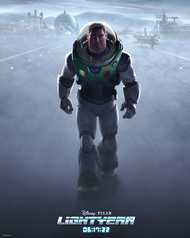


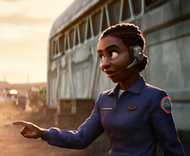
Outer space science fiction
Hostile lifeforms
Malevolent robots
Time dilation
Another Woke Disney product that attempts to validate LGBTQ and Feminist idealogy
Makes Buzz’s inspiration and the story’s true hero his Lesbian friend, Aisha
Attempts to normalize the idea of two women marrying each other and having a baby
GAY—What’s wrong with being Gay? Answer —Homosexual behavior versus the Bible: Are people born Gay? Does homosexuality harm anyone? Is it anyone’s business? Are homosexual and heterosexual relationships equally valid?
What about Gays needs to change? Answer —It may not be what you think.
What does the Bible say about same sex marriages? Answer
Read stories about those who have struggled with homosexuality
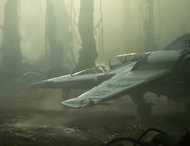


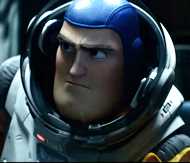
| Featuring |
|---|
|
Chris Evans … Buzz Lightyear (voice) Keke Palmer … Izzy Hawthorne (voice) Peter Sohn … SOX (voice) Taika Waititi … Mo Morrison (voice) Dale Soules … Darby Steel (voice) James Brolin … Zurg (voice) Uzo Aduba … Alisha Hawthorne (voice) Mary McDonald-Lewis … I.V.A.N. (voice) Isiah Whitlock Jr. … Commander Burnside (voice) Angus MacLane … ERIC / DERIC and Zyclops (voice) Bill Hader … Featheringhamstan (voice) Efren Ramirez … Airman Díaz (voice) Keira Hairston … Young Izzy (voice) |
| Director |
|
Angus MacLane |
| Producer |
|
Pixar Animation Studios Pixar [Canada] Walt Disney Pictures See all » |
| Distributor |
While exploring an unknown planet, Buzz Lightyear (Chris Evans), Commander Hawthorne (Uzo Aduba) and Rookie Featheringhamstan (Bill Hader) are forced to make a hasty departure when they’re attacked by vine creatures. Buzz can’t quite steer the ship over the top of a jagged peak and the vessel crash-lands on the inhospitable world.
One year later, a small base has sprung up around the ship, constructed by the ship’s crew who’ve been roused from their suspended animation naps. These industrious pioneers also have designed an experimental spaceplane that might be able to achieve hyperspeed, which will allow Buzz to bring his crew home and complete his mission.
With each unsuccessful mission, Buzz returns to the base to find that everyone has grown older. When Buzz finally achieves hyperspeed, he comes home to a grim reality… the descendants of his original crew have been wiped out by an army of malevolent robots.
Does that synopsis make “Lightyear” sound kind of ho-hum and hard to follow for a kid’s movie? It is.
If you find the plot hard to track, try apprehending the movie’s “meta” introduction, which tells us that young Andy from “Toy Story” (1995) first idolized his favorite toy (Buzz, not Woody apparently) while watching a movie starring the Space Ranger, and that “This is that story.” So, just to be clear, we’re watching an animated movie about an action hero that a kid in another animated movie also watched; and his toy, based on the action hero in the movie, becomes the co-star of four films. Somebody pass the Advil.
The opening sequence of “Toy Story 2” (1999) features a brief episode where Buzz cleverly defeats an army of robots and encounters the villainous Zurg. The action-packed sequence cleverly sets up the climactic confrontation and starts the movie off with a bang.
As exhilarating as the pulse-pounding preamble is in “Toy Story 2,” I couldn’t have handled an entire movie in the same style and at the same breakneck pace. Though the story here isn’t nearly as pedestrian as the dramatized video game in “Toy Story 2,” it has an overall campiness that the film’s handful of decent character moments can’t quite overcome.
“Lightyear” serves as an origin story for Buzz Lightyear and a loose prequel to the “Toy Story” movies. It gives us more details about the way Star Command and its Space Rangers operate. However, despite some nifty weapons, like the laser blade, and sweet-looking ships, like the XL-15, much of the movie is a pastiche of other sci-fi franchises, particularly “Star Wars” and “Star Trek.”
Buzz’ mission logs are an obvious rip-off of the captain’s log in “Star Trek.” Also, the visuals when the XL spaceship attempts to slingshot around a sun are remarkably similar to the slingshot sequences in “Star Trek IV: The Voyage Home” (1986).
Other than their bright yellow paint job, the hulking Zyclops robots bear more than a passing resemblance to the super battle droids in the “Star Wars” prequels. The capital ship Zurg commands is reminiscent of an Imperial Star Destroyer (the Arquitens Class command cruiser in particular). Buzz and his team come up with a plan to destroy Zurg’s mother ship, which will deactivate all the robots. This plan is virtually identical to the one hatched by the Gungans and the Naboo to destroy the Trade Federation ship, which deactivates all the battle droids in “Star Wars: Episode I – The Phantom Menace” (1999).
Spiritual Aspects
Aside from leaning on well-worn sci-fi tropes, the movie attempts to explore some adult themes, with varying degrees of success. The challenges inherent in colonizing an alien planet are addressed obliquely, but the dome-like protection, called “Laser Shield,” prevents a lot of dramatic tension and potential action scenes. To its credit, the movie references some science, like relative velocity and time dilation… pretty ambitious for a kid’s movie.
Also to its credit, the film subtly weaves an allusion to “Moby Dick” into its plot. After repeated failed attempts to reach hyperspeed, Buzz realizes his friends are getting older and are having kids and grandkids. At some point you’d think Buzz would stop, turn the mission over to a younger pilot and spend some quality time with his aging friends. But no, Buzz’ pride (Proverbs 16:18) won’t allow that.
Breaking the hyperspeed barrier is Buzz’ white whale. He risks everything to reach that goal. Sadly, obsession blinds him to what matters most in life; he never gets to say goodbye to Hawthorne and his other friends because he’s off flying a mission when they pass away. It’s a poignant moment for the audience, as we place ourselves in Buzz’ boots and consider the brevity of life (James 4:13-17) and what awaits us in the Great Beyond.
However, after learning that his friends have died (Hebrews 9:27), Buzz doubles down on his quixotic quest. With the space program scrapped, Buzz steals his old spaceplane, thereby violating the Eighth Commandment, “You shall not steal” (Exodus 20:15). When the command center asks who’s in the cockpit, he lies (Proverbs 12:22) and says he’s part of the cleaning crew.
Other than the secondary themes of obsession and growing old, the movie’s main themes, which are hammered home over and over again in the dialog, are Buzz’ independence and the crew’s guilt beatings from making mistakes.
Buzz isn’t very likable at the beginning of the film. He’s arrogant, controlling (he detests autopilots) and overconfident (Buzz’ overestimation of his piloting abilities is what causes the ship to crash, which is the inciting incident for the movie’s many complications). He makes condescending remarks about the rookie and ignores the young man’s frequent attempts to lend a hand. In essence, Buzz is John Wayne in space.
Buzz’ narcissism is on full display when he makes mission logs. Dictated like a dramatic reading, these oft-embellished recordings are just to make him look good in the eyes of his superiors. Hawthorne calls out Buzz’ compulsion to record their missions and refers to his habit as “narrating” (not to be confused with “monologuing” in “The Incredibles”). The fact that Hawthorne tells him no one listens to his recordings doesn’t dissuade Buzz from making log entries during the rest of the movie. Add stubbornness to Buzz’ list of negative character traits.
As was mentioned earlier, the movie’s writers work overtime to highlight Buzz’ independent nature. At one point, Buzz says, “I’m better off doing the job by myself.” Later, he says, “I’m always sure.”
Q & A
What does the Bible say about pride and HUMILITY?
Fortunately, Buzz comes to see the value of teamwork. He gradually abandons his desire to control everything. He learns to accept the ideas of others and even delegates responsibilities he’d normally shoulder himself. Buzz’ loner leader turned team player story arc culminates with this admission, “I can’t do it alone. I need help.” Buzz’ transformative realization is also germane for those in the audience; we all need others in our life, and must learn to yield to a Higher Power.
A few characters beat themselves up over mistakes they make. The first is Buzz, who wants to court martial himself after crashing the ship. His all-consuming need to break the hyperspeed barrier is tied to the guilt he feels over waylaying the mission and placing everyone on the ship at risk.
Side character, Mo Morrison (Taika Waititi), expresses feelings of guilt over a mistake, as does Izzy Hawthorne (Keke Palmer). Izzy also experiences the crushing weight of expectations she’s placed on herself. She says, “I’m supposed to be as good as my grandmother.” Sadly, Izzy doesn’t realize that her Creator has a unique purpose (Romans 8:28) for her life, a separate path from her grandmother’s.
While guilt can be a useful emotion, it also can consume a person’s life, which isn’t healthy. The Good News is that there is One (1 Timothy 2:5) who can remove the guilt over past mistakes. If we confess (1 John 1:9) our faults, He promises to forgive the things we’ve done wrong. He died so we can have eternal life (Hebrews 9:15).
Q & A
GUILT—How can I be and feel forgiven? Answer
FORGIVEN?—If God forgives me every time I ask, why do I still feel so guilty? Answer
Saving the worst for last, the movie features a homosexual (Romans 1:26-27) relationship. After returning from a mission, Buzz notices a ring on Hawthorne’s finger. Buzz must already know that Hawthorne is a lesbian because he asks, “Who is she?” (otherwise, he would’ve asked “Who is he?” or “Who’s the lucky person?”).
As Buzz checks in on Hawthorne after various missions, we see her in an apartment with another woman, and then later with the same woman and some kids. In one montage shot, we see Hawthorne kiss her female partner.
Surely, this is Disney’s influence on the story, since the company is brazenly pro-homosexual. It’s a sad, sad day when moviemakers foist an alternate lifestyle on impressionable young viewers. Unfortunately, unless they repent, their fate is sealed (Luke 17:2).
Q & A
GAY—What’s wrong with being Gay? Answer —Homosexual behavior versus the Bible: Are people born Gay? Does homosexuality harm anyone? Is it anyone’s business? Are homosexual and heterosexual relationships equally valid?
What about Gays needs to change? Answer —It may not be what you think.
What does the Bible say about same sex marriages? Answer
Objectionable Material
OFFENSIVE LANGUAGE/VULGARITIES: There aren’t any expletives in the movie. However, there are a few instances of mild vain speech like “shoot” and “blast.” Several other fairly benign phrases, such as “you’re mocking me,” “dumb bugs” and “screwed up,” may concern some parents. A man mistakenly thinks Buzz wants someone to pull his finger—a fart joke done on the sly.
ALCOHOL/DRUGS: No alcohol or drugs here.
NUDITY AND SEXUAL CONTENT: The movie doesn’t have any nudity or sex scenes. However, there’s an awkward scene where Buzz explains that he and Izzy’s grandmother used to point their fingers at each other (and say “To infinity and beyond”). Though Buzz’s actions were completely innocent and appropriate, some characters misinterpret this as an act of impropriety. The only display of affection in the movie is the lesbian kiss mentioned above.
VIOLENCE AND GRAPHIC CONTENT: There isn’t any graphic violence in the movie, but there are several action sequences where characters fire laser guns at robots or slice through vine creatures with glowing laser blades. Giant flying bugs are blown apart or sliced in half by lasers. An arrow is shot through the head of one robot. Several robots are blasted and appendages or parts fall off their bodies.
There’s a scene where Buzz arms his team with guns and various other weapons from an armory. One character says he’s on parole and isn’t allowed to fire a gun. Buzz says their desperate situation warrants breaking the law… and he hands the person a gun.
During a battle with robots, some members of Buzz’ team throw grenades and fire different kinds of weapons. Again, there isn’t any blood or gore here, but you could make a pretty large mound of scrap metal from all the dismembered or demolished robots.
Final Thoughts
“Lightyear” is a disappointment on many levels. It contains the merest fraction of the movie magic that made the “Toy Story” franchise so wildly popular with kids, parents and critics alike.
Thematically, the movie is very adult, and aesthetically, it’s very dark. There’s little levity and very few funny lines in the movie. Plus, the hero isn’t very heroic for the first half of the film. Then there’s that Lesbian/Feminist ideology, which really sullies the movie’s innocence.
Though the production elements are top-notch, the story is lacking. I expect much more from Pixar (the quality of their movies has steadily declined since Disney bought the studio).
Still, “Lightyear” is educational. It teaches us the proper way to make a meat sandwich. It also leaves us pondering the big questions about life and the universe.
Like, what’s beyond infinity?
- Violence: Moderate
- Profane language: None
- Vulgar/Crude language: None
- Nudity: None
- Sex: None
- Drugs/Alcohol: None
- Occult: None
Editor’s Note: Christian Spotlight recommends viewers SKIP this film. We also sadly recognize that the Disney company has for some time now become an active enemy of biblical Christianity.
Learn about DISCERNMENT—wisdom in making personal entertainment decisions
 Every time you buy a movie ticket or buy or rent a video you are in effect casting a vote telling Hollywood, “I’ll pay for that. That’s what I want.” Read our article
Every time you buy a movie ticket or buy or rent a video you are in effect casting a vote telling Hollywood, “I’ll pay for that. That’s what I want.” Read our article
See list of Relevant Issues—questions-and-answers.
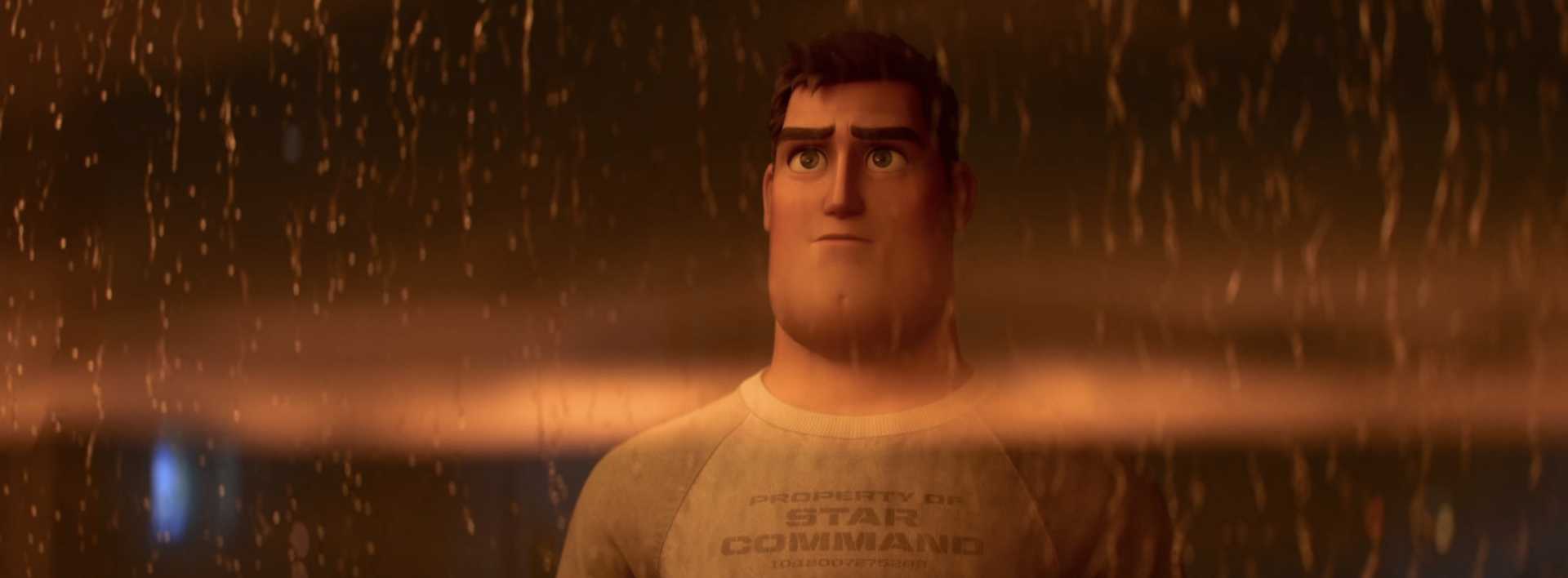
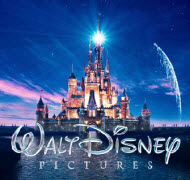


The film is meant to go against sinful societal norms which is why I think some people want the film to seem worse than it is. How Buzz is able to save everybody and how this relates to Andy (most likely a Christian child of the 90s) is the other main thing to take away from this film since it’s probably more relevant now than before.
My Ratings: Moral rating: Good / Moviemaking quality: 4